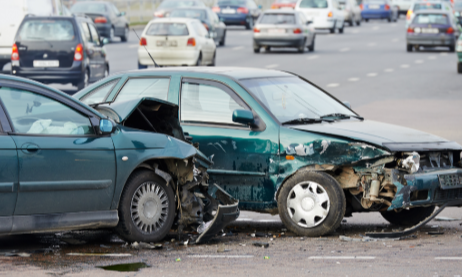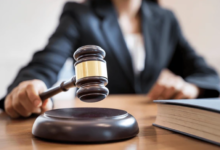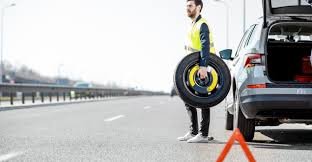How Fault Is Determined in Las Vegas Car Accidents

How Fault Is Determined in Las Vegas Car Accidents turns on Nevada’s comparative negligence rule, solid evidence, and clear documentation. Within hours, choices at the scene shape outcomes. Can gather proof, guard deadlines, and counter insurer tactics to strengthen your claim, from start.
Nevada’s Comparative Negligence Rule (NRS 41.141)
Nevada uses a “modified comparative negligence” standard. You can recover damages so long as you’re not more than 50% at fault; your award is reduced by your percentage of blame. If you’re 51% or more at fault, you cannot recover. For multi-defendant cases, liability is apportioned by fault.
Why this matters: Even small pieces of evidence that shift the percentages, say, showing the other driver sped or looked at a phone can move you below the 51% bar and keep your claim viable.
What Investigators Look For Evidence That Alters Fault
Investigators (insurers, attorneys, sometimes expert crash recon teams) look for proof that ties conduct to the collision. Traffic-law violations can also support negligence per se—a shortcut showing breach of duty when a safety statute is violated and causes the crash, subject to excuses.
Key Evidence & How It’s Used
| Evidence type | Why it matters | How to get it fast |
| Police crash report | Summarizes scene, witnesses, citations, diagrams; influential with insurers | Request from agency; note report number at scene |
| Photos/video (dash, doorbell, traffic cams) | Fixes positions, signals, weather, impact angles | Copy from your devices; ask nearby businesses/homeowners |
| EDR/“black box” data | Records speed, braking, throttle, belt use | Preserve vehicle; have counsel request download |
| Witness statements | Corroborate sequence of events | Capture contact info; record contemporaneous notes |
| Medical records | Link injuries to crash; timing matters | Seek treatment immediately; keep all records |
| Phone/app data | Can show distraction timing | Attorney subpoenas if needed |
Police Reports, Insurance Adjusters and Recording Your Statement
Police reports do not legally decide fault courts and insurers may weigh them, but they’re not binding. Still, insurers rely on them heavily, especially when they include diagrams or an officer’s preliminary assessment. Provide facts, not speculation, and correct errors promptly.
Adjusters evaluate statements, vehicle damage, medical records, and statutes to allocate percentages of fault. If an insurer delays or misapplies the law, you can seek help from the Nevada Division of Insurance consumer services unit, which investigates complaints about unfair claim practices.
How Insurers Commonly Weigh Fault Inputs
| Input | Typical impact on fault | What you can do |
| Citation for a moving violation | Strong signal of breach; may trigger negligence per se arguments | Contest if inaccurate; document context (e.g., evasive maneuvers) |
| Conflicting stories | Leads to shared fault unless evidence breaks tie | Secure witnesses; preserve video quickly |
| Vehicle damage patterns | Corroborate angles/speeds; supports or undermines narratives | Photograph all vehicles before repair |
| Recorded statements | Can be used to assign admissions | Decline until you’ve spoken with counsel |
| Delay in care | Insurers argue gaps mean unrelated injury | Get evaluated promptly; follow treatment plans |
Common Crash Patterns in Las Vegas and Who is Usually at Fault
If injuries, disputed liability, or multiple vehicles are involved, consult a Las Vegas car accident lawyer early. Counsel helps preserve evidence, handle adjusters, and apply Nevada’s comparative negligence rules so partial fault doesn’t unfairly shrink your recovery. Early guidance also prevents missteps in recorded statements and forms. Patterns recur on busy corridors and at resort-area intersections:
- Rear-end collisions: The trailing driver is typically at fault for following too closely or inattention; sudden, unnecessary braking by the lead car can shift percentages.
- Left-turn across oncoming traffic: Turning driver often bears majority fault if they misjudge gaps or ignore signals; excessive speed by the oncoming driver can share fault.
- Red-light or stop-sign violations: Running a signal strongly supports negligence per se if the violation caused the crash.
- Lane-change/sideswipe on I-15 or the 215: Failure to ensure lane is clear can place fault on the changer; blind-spot and speed evidence refine shares.
- Pedestrian at mid-block on the Strip: Drivers must use due care; pedestrians must obey signals. Fault can be split depending on lighting, speed, and right-of-way.
Crash Scenario Snapshots & Typical Fault Considerations (Illustrative)
| Scenario | Typical indicators of fault | Nevada-specific notes |
| Rear-end at light | Phone use, no skid marks, short headway | Comparative negligence can apply if lead car braked abruptly without reason |
| Left-turn vs. through | Turn arrow timing, gap acceptance, speed data | Through driver’s speeding can reduce turning driver’s share |
| Red-light T-bone | Signal phase data, intersection cameras | Signal violations can ground negligence per se claims |
| Freeway lane-change | Mirror use, blinker, lane position | Fault can split when both cars move simultaneously |
| Pedestrian hit | Crosswalk status, lighting, conspicuity | Duties on both sides; allocation depends on compliance with rules |
Your Step-by-Step After-Crash Checklist
- Check safety & call 911. Get medical help first.
- Document the scene. Photos, video, and witness contacts are priceless.
- Exchange info & note details. Location, time, visibility, lanes, traffic controls.
- Ask about the report number. If police do not investigate, Nevada requires you to submit an SR-1 crash report within 10 days to the DMV.
- Seek prompt medical care. Creates the injury timeline.
- Notify insurers cautiously. Stick to facts; avoid speculation; consider counsel before recorded statements.
- Preserve vehicles & data. Don’t authorize disposal before evidence is secured.
- Consider counsel. An attorney coordinates experts and protects against unfair fault apportionment.
Read Also: Essential Technology for Small Business Owners
Deadlines, Damages, and Why Legal Help Matters
Deadlines: For most Nevada personal-injury claims including car accidents you generally have two years from the date of injury to file a lawsuit; missing this window can bar recovery. Property-damage claims may have different limits. Confirm specifics for your case.
Damages: You can claim medical expenses, lost wages, pain and suffering, and property loss. Your award is reduced by your percentage of fault under NRS 41.141’s comparative negligence scheme.
Strategy and proof: Effective claims tie crash mechanics to rule violations. Where a safety statute (e.g., running a red light) is violated and causes injury, Nevada courts recognize negligence per se, unless the violator shows an excuse. That can substantially shift fault percentages.
When insurers stall: If you face wrongful denials or undue delays, you can complain to the state regulator the Nevada Division of Insurance for investigation and assistance.
Conclusion
Understanding How Fault Is Determined in Las Vegas Car Accidents helps you protect your rights, preserve evidence, and meet deadlines. Meticulous documentation and smart strategy can shift percentages in your favor. Coordinate proof, manage adjusters and pursue maximum compensation.
FAQs
1) Does the police report decide who’s at fault?
No. It’s influential but not legally binding; insurers and courts make their own determinations from all evidence.
2) Can I recover if I’m partly at fault?
Yes so long as you are 50% or less at fault. Your compensation is reduced by your share of fault.
3) How long do I have to sue after a crash?
In most personal-injury cases, two years from the injury date. Don’t wait; evidence goes stale.
4) What if the crash wasn’t investigated by police?
File the DMV SR-1 crash report within 10 days of the accident.
5) What if the insurer keeps delaying my claim?
Document everything and consider contacting the Nevada Division of Insurance to file a complaint.





